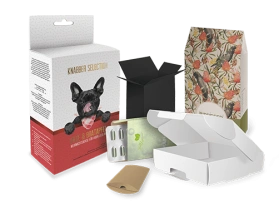In the dynamic world of packaging, where first impressions are paramount and functionality is non-negotiable, one solution consistently stands out: folding boxes. These versatile packaging powerhouses are more than just containers; they are integral components of brand identity, product protection, and consumer experience. From delicate cosmetics to robust industrial parts, businesses across countless sectors rely on the adaptability and efficiency of folding cartons. But what exactly makes them so ubiquitous and essential?
This article delves deep into the often-overlooked aspects of folding box packaging, offering insights that can help businesses make informed decisions about their packaging strategies. Whether you’re a startup looking to make a splash or an established enterprise seeking to optimize your supply chain, understanding these ten key points about folding boxes will put you ahead of the curve.
1. Versatility is Their Middle Name
Perhaps the most compelling characteristic of folding boxes is their incredible versatility. They can be designed in an astonishing array of shapes and sizes, accommodating everything from intricate jewelry to bulky hardware. Beyond standard rectangular forms, custom die-cutting allows for unique structural designs, windows, and internal partitioning. This adaptability means that with careful design, a folding box can be perfectly tailored to cradle and present almost any product imaginable, enhancing both protection and aesthetic appeal.
2. Material Matters: A Spectrum of Choices
The base material for folding boxes is typically paperboard, but the type and characteristics of this paperboard vary significantly. Options include solid bleached sulfate (SBS) for premium products, coated unbleached kraft (CUK) for strength and sustainability, recycled board for eco-conscious brands, and specialty boards with unique textures or finishes. The choice of material impacts not only the box’s strength and durability but also its printability, recyclability, and overall cost. Understanding these material differences is crucial for selecting the right folding boxes for your specific needs.
3. The Power of Print: Branding Beyond the Box
Folding boxes are essentially blank canvases for branding. High-quality offset printing, digital printing, and flexographic printing techniques allow for stunning graphics, vibrant colors, and intricate designs. Beyond the visual appeal, printing also facilitates essential information like product details, barcodes, and regulatory notices. Effective graphic design on folding boxes transforms a simple container into a powerful marketing tool, communicating brand values and attracting consumer attention on crowded shelves.
4. Structural Integrity: Protection is Key
While often perceived as lightweight, well-designed folding boxes offer significant product protection. Their construction, often involving interlocking flaps or glued seams, provides a rigid structure that can withstand the rigors of shipping and handling. Furthermore, internal inserts, trays, or custom fitments can be incorporated to secure the product within the box, preventing movement and minimizing damage. This protective quality is vital for maintaining product integrity from the production line to the consumer’s hands.
5. Sustainability: An Eco-Friendly Choice
In an era of increasing environmental awareness, folding boxes stand out as a highly sustainable packaging option. Made primarily from renewable wood fibers, they are often recyclable, and many are compostable or biodegradable. The use of recycled content in paperboard further enhances their eco-credentials. Brands can choose certifications like FSC (Forest Stewardship Council) to assure consumers of responsible sourcing, making folding boxes a preferred choice for environmentally conscious companies and consumers alike.
6. Cost-Effectiveness: Smart Packaging for Every Budget
Compared to other packaging solutions like rigid boxes or plastic containers, folding boxes are generally more cost-effective. Their flat-pack shipping reduces transportation costs and storage space before assembly. The efficiency of high-speed automated assembly lines further contributes to lower production costs per unit. This economic advantage makes folding boxes an attractive option for businesses of all sizes, allowing for quality packaging without breaking the bank.
7. Assembly: Manual vs. Automated Efficiency
Folding boxes are designed for efficient assembly. For smaller runs or intricate designs, manual assembly is common. However, for large-scale production, automated packing lines can rapidly form, fill, and seal thousands of boxes per hour. The design of the box itself, including the placement of creases and tabs, plays a critical role in optimizing both manual and automated assembly processes, directly impacting production speed and labor costs.
8. Customization: Standing Out from the Crowd
Beyond basic shapes and printing, customization options for folding boxes are extensive. This includes special finishes like matte or gloss lamination, UV coating, hot foil stamping, embossing, debossing, and window patching. These embellishments add a premium feel, enhance tactile appeal, and create a memorable unboxing experience. Strategic use of these options can significantly elevate a product’s perceived value and differentiate it in a competitive market.
9. Supply Chain Benefits: Storage and Logistics
One of the unsung heroes of folding boxes is their impact on the supply chain. Shipped flat, they occupy significantly less space than pre-formed boxes, leading to reduced freight costs and more efficient warehouse storage. This knock-down design allows for just-in-time assembly, reducing inventory holding costs and minimizing waste. This logistical advantage is a major reason why businesses opt for folding boxes over bulkier alternatives.
10. The Unboxing Experience: More Than Just Packaging
In today’s e-commerce driven world, the unboxing experience has become a critical part of the customer journey. A well-designed folding box contributes significantly to this. Thoughtful design, quality printing, and easy-to-open features create a positive and memorable interaction, reinforcing brand loyalty and encouraging repeat purchases. The folding box is not just a container; it’s a touchpoint that can delight customers and strengthen their connection with your brand.
Conclusion
Folding boxes are far more than simple packaging; they are a sophisticated blend of engineering, art, and marketing. Their versatility, sustainability, cost-effectiveness, and branding potential make them an indispensable tool for businesses striving for product protection, market differentiation, and customer satisfaction. By understanding these ten critical aspects, companies can leverage the full power of folding box packaging to enhance their brand, streamline their operations, and deliver an exceptional experience to their customers. Investing in well-designed folding boxes is an investment in your product’s success and your brand’s future.

